Electrofishing Certification – Learning With A Zap
For the past two years, at least, I have been wanting to complete the Class 2 Backpack Electrofishing Course. Why? Well, even before the notion of returning to school had entered my mind, I was doing my best to help out with conservation activities, and electrofishing (using an electrical pulse to temporarily stun fish) struck me as a really neat tool and a very effective way of learning more about fish populations. However, I have a very healthy respect for electricity in any situation, but especially in the water. While I could participate in electrofishing events as a crew member, I really wanted to know more about the process, the electrofisher itself, and I wanted to have the training necessary to lead a crew. Since I have returned to school the certification also makes sense from a career standpoint.
It took a long time to find a course I could participate in. Most of the ones I found online were full long before Google brought them to my attention. However, I happened to connect with fellow angler Lori Knight, a fisheries biologist for a consulting firm, and find out that she often teaches the course. With my schedule having crossed into the chaotic side of things since returning to school, I kept having to pass up the opportunity to take one of Lori’s courses. The stars finally aligned in October and I happened to be on reading week while Lori was teaching the electrofishing course at Niagara College, so I quickly signed myself up, bought a non-breathable pair of waders, and headed down the QEW.
The Ontario Ministry of Natural Resources (OMNR) requires the electrofishing certification course for all crew leaders. The Class 2 certification means that successful completion of the course qualifies a person to lead a backpack electrofishing crew. The course is split into a lecture portion with a written exam, and an on-the-water portion. Due to the size of our class, this happened over two days.
Even though I had read the course manual, I felt I was very much in need of a clear lecture to help me understand everything. Lori started by discussing OMNR policy regarding electrofishing – what different certifications meant, how long a certification lasted, and any other requirements. As you can imagine, much of the course was spent on safety. For me, it was a relief to see the variety of safety measures that have been incorporated into electrofishing. One of my teachers at Fleming is rather fond of repeatedly telling her Fish & Wildlife students, “You can DIE while electrofishing!” While I always laughed as she told me those stories, her warning came back as I was sitting in the classroom. However, although there is certainly a chance of death when using electricity in water, I learned that the electrofisher will shut off if you release your hold on the deadman switch, or if you tilt the unit too far in any direction, or if the water sensor is tripped, or if someone hits the emergency shutdown. By checking all the safety features, using the right equipment (such as non-breathable waders), and employing a little common sense, you can drastically reduce the chances of harm from electrofishing.
When we got to the part of the course focusing on electrical theory, I had flashbacks to high school physics – one of my least favorite courses, but understanding resistance, power, and electrical circuits does help you understand how an electrofisher works.
We quickly worked through the in-class material and wrote the exam. I am the type of person to get worked up about tests, but I usually do alright on them. I handed in my paper and headed home, full of anticipation for the on-the-water portion the following day.
Despite struggling to keep my car on the highway as I crossed the Burlington Skyway the next day, it was a beautiful fall morning to be outside. The stretch of river we were working in was nicely sheltered by trees and the wind left us alone while we again ran through the safety features and completed the daily checklist. We were split into groups of four and although I was eager to get in the water, I wanted to watch one group before it was my turn. Each person in the group took turns wearing the backpack and testing the safety features. Most of us quickly realized that testing the tilt switch was best done by tilting forward. A few brave souls had far more flexible backs and better balance than I, and they attempted to set it off by tilting backwards.
The basic setup with the group of four was to have one person as the leader using the electrofisher, one person on either side and slightly back of the leader, and one person behind the group holding a bucket for the fish. As the first group began to fill the bucket, we handed them a new one and started sorting the catch. I had been told to expect some green sunfish and gizzard shad, neither of which I had handled before, and I wasn’t disappointed. We found pumpkinseed, bluegills, green sunfish, gizzard shad, a rudd, and, unfortunately, several goldfish.
As the group emerged from the water and started handing off their rubber gloves, I took a pair and went into the stream to test my waders and the gloves for leaks. Finding no leaks, I joined my group upstream and we got setup.
It was fascinating to watch the electrofisher in action. When done correctly, electrofishing will maximize the stun field and the fish will undergo electronarcosis, a state of immobility caused by muscular relaxation. Then electrotaxis, a forced swimming towards the anode (the pole held by the leader) will occur. In water that appeared to hold no fish, I would all of a sudden see fish rising to the surface, belly up, and being drawn towards the anode. It happens so quickly that everyone has to be on the lookout for them so the netters miss as few as possible. Once the fish were netted, they were deposited in the bucket and almost immediately started recovering. Lori had warned us that nets needed to be almost directly behind the anode in fast water because the fish would be swept through so quickly – she wasn’t kidding! As we moved toward a riffle is seemed like fish were just flying at us.
Spending even that brief time together as a crew was a valuable learning experience, and I’d gladly work with that crew again. We looked out for hazards and were careful to warn each other. We took turns going through the steps to power up the unit, run the emergency switches, and shut it off after each use. Figuring out how to attach and detach the battery cables while wearing bulky rubber gloves was sometimes frustrating, but gave us all a laugh.
At the end of the day, it was really quite empowering to have used the electrofisher and feel competent with it. I have much more learning to do and look forward to many hours on the water with it, although I may regret those words in the middle of the summer if I find myself stuck wearing it for very long!
Lori was an awesome teacher and I felt safe knowing that she was watching our every move in the water. I can’t thank her enough for keeping me up to date on her course offerings so I could finally cross this item off my list. I hope to be using this knowledge in the very near future with whatever job I may land after graduating next spring.
argosgirl
Latest posts by argosgirl (see all)
- Open Water Season Begins - March 16, 2024
- A Day Trip To South River - March 2, 2024
- New Year’s Camping At MacGregor Point - February 24, 2024
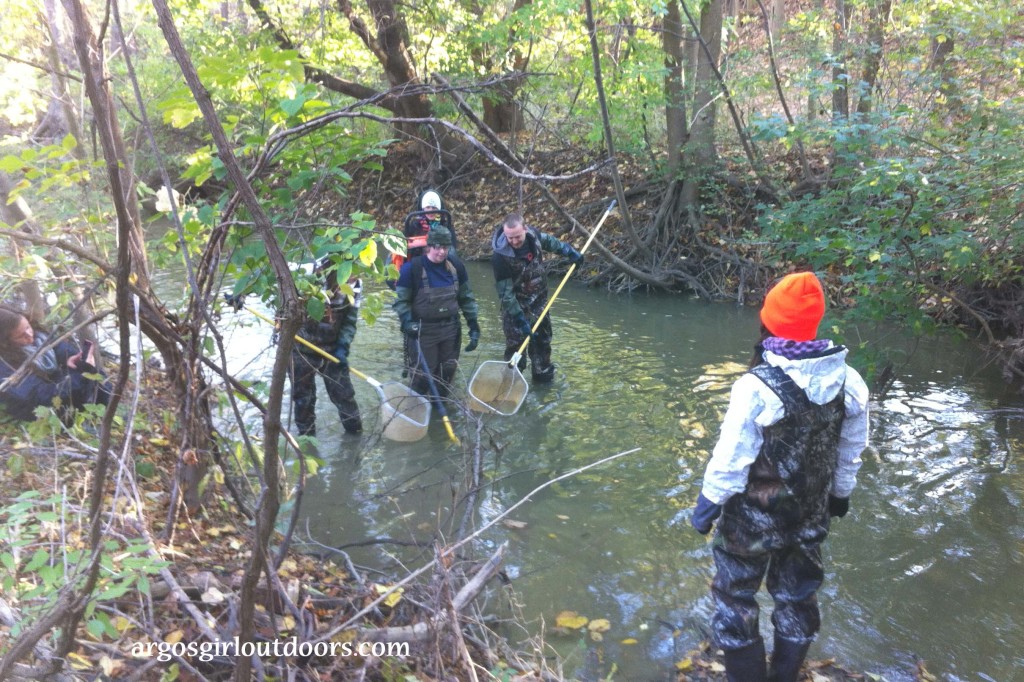
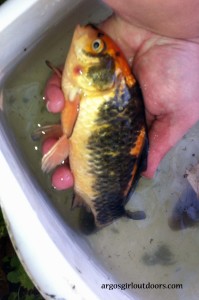
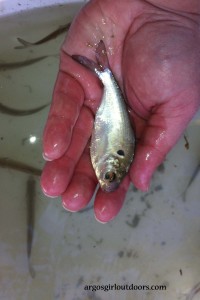
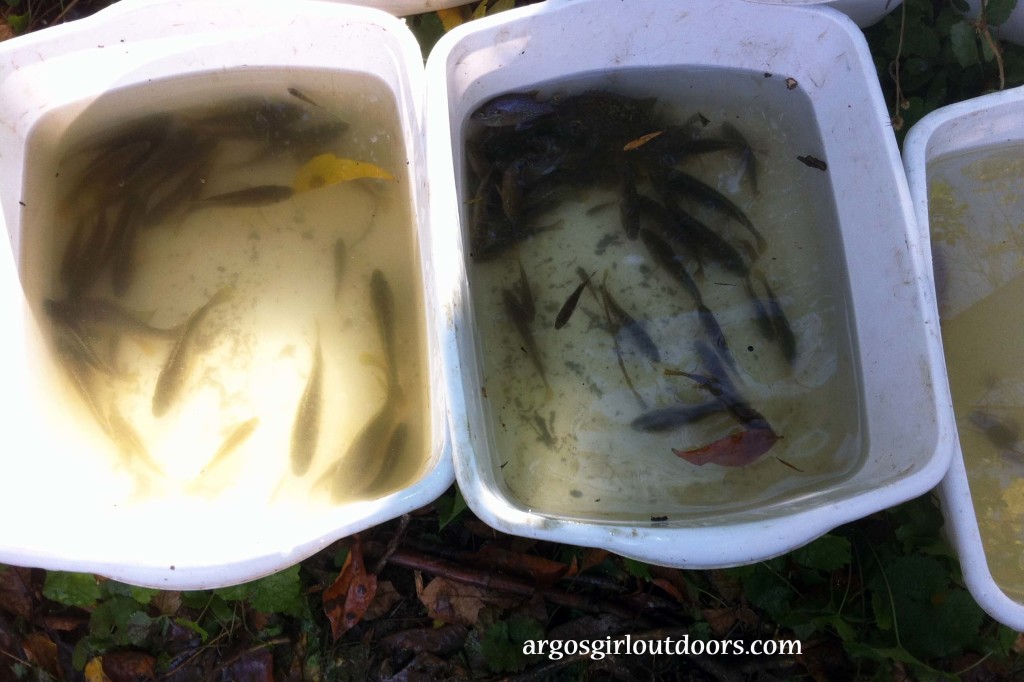
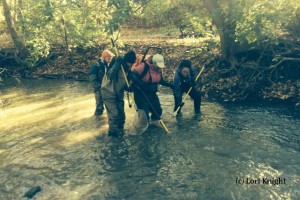
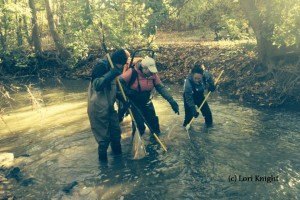


Nice going, Rebecca. As one who’s participated in electro-surveys of trout populations, I can say that it’s an important skill to have. It’s like fishing with an instant access to scientific knowledge. Congrats!
Thanks Walt! It’s such a great way to study fish, and I love having the opportunity to gain more knowledge.